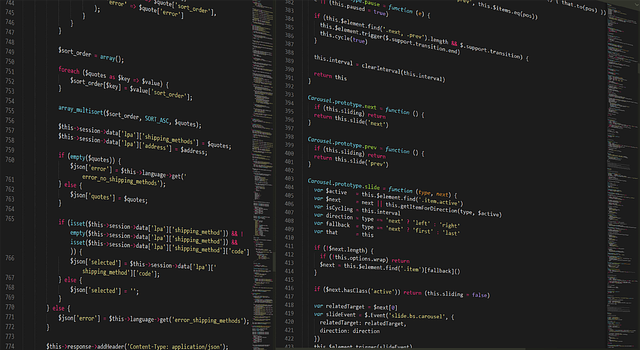Building An Engineering Brand For Hiring
- Published
- Reading Time
- 6 minutes
- Contents
I attended a fascinating talk recently by Sidu Ponnappa, SVP Engineering at Gojek, on how startups can build an employer brand for hiring tech talent. The talk was organised by the Setu team.
Here are the key takeaways from the session.
About Sidu Ponnappa: He has been in tech for ~15 years, joined Gojek in ’15, after C42, a boutique software product firm, he cofounded was acquired by Gojek. He shared an interesting personal mantra that has helped him grow “touch the most important thing no one else wants to touch”. He also says this mantra is pretty much all that a senior person does.
India is taking off, and tech salaries are going crazy
He said, finally, India (or at least tech startups) is taking off. We have been talking about it in ’05, then ’10, ’15 but finally it is here. And with all this funding boom, there is a severe shortage of talent that can take an idea and take it to fruition, e.g., PMs who can talk to customers and take it to PRD; an engineer who can look at a Requirements Doc and create the code that goes into production. This kind of talent has always been at a shortage. With each passing year the shortage is only getting worse.
Now with the hyperfunding phase on, wearing his supply side hat, he finds that the demand for high quality talent is insane. Anybody good is sitting on 5 job offers. And everyone knows this. Compensation is going crazy.
How should startups and engineering heads manage in this environment?
Solution: Create a brand
Sidu said we should look at engineering talent as three broad categories
- Category 1: good at their job and love what they are doing
- Category 2: good at their job but don’t enjoy what they are doing (nursing passions for other careers etc.)
- Category 3: bad at their job
He says Category 3 engineers are 90% or so of the available ones when you try to recruit. Thus, when you are recruiting in the Indian market, especially at scale, you need to have an industrial scale anti-fraud set up to filter this profile out.
How do you ensure that you are able to hire, or compete for Category 1 talent? Especially when their salaries are sky high.
In this present environment, Sidu says, the simplest solution is to create a brand, and give only the Cat1 Engineers (legit operators as he terms them) a reason to join your company.
Outbound recruiting, unless you have near infinite budgets, is simply not sustainable he says. Only an inbound strategy is sustainable, one that encourages Cat1 talent to seek you out.
That said, he says there is a limit to how much marketing / inbound can work if the money is not on par with market. No amount of brand / culture can make up for, say, 80% delta in compensation. At best, 20-30% delta in pay between your firm and the competitor’s can be covered by your brand. But you will still have churn, typically as your team hits life stages – getting married, or having a kid etc.
How do you build a brand?
Sidu shares a few ideas to brand build. These are based on what they did at Gojek.
Create ‘nerd pull gravity’. Good engineers know who other good engineers are. So ask around your organisation who the good engineers are. These ‘luminary engineers’ as he calls them should be showcased, through your communication / collateral. Make these superstar engineers stand out and say “if you want to work with these stars, join us”.
Be authentic. You cannot fake the quality of talent when you communicate. Your external facing brand is observed by people inside. You cannot have a very big gap vs reality, else people will get cyncial. The branding has to be legit and authentic. Your authenticity will also be apparent when the talent / interviewee meets your team for interviews – there will be discussions around engineering / execution strategy, and if the responses to questions the interviewee asks your team differs, then it is a signal that there is something wrong with the engineering culture.
Create compelling content. But this isn’t easy. At Gojek, they hired a team of ex-journalists, and told them to ferret out stories from within. They targeted 2 serious pieces of content every week. They even made generation of content part of KRA. It still wasn’t easy says Sidu. From the time they started working to the time it began running smoothly, it took 18 months, says Sidu.
Key to getting your content strategy working is to segment your engineers well. Understand what kind of different engineers are you hiring and what is each segment of engineers interested in. Say for regtech or fintech, you are hiring engineers with experience in financial compliance or similar areas. Then figure out what content and what channel is used by this segment to consume. Certainly social media channels will reign supreme, but are other niche channels or blogs referred to by this segment. Find this out.
Overall, Sidu says your goal is to ensure you complete two loops effectively through the right content strategy. The 1st loop is complete when you get people to google you. The 2nd loop is to ensure that when they google you, they find what you wanted them to find!
The talk was followed by a Q&A session. Key Qs and Sidu’s responses follow.
Q. What do you mean by engineering (or execution) strategy?
A. When a candidate comes in for an interview, he or she is really seeking out two important aspects of the role. The first is – who they will work with. The second is about how your org works. This fundamentally is really the execution strategy. Effectively how do you get the work done, and why is it better? The engineering strategy is really a derivative of that dealing with the specific technology or approach taken to get the work done e.g., monolith / microservices, whether you use scrum, the rate of iteration etc.
Sidu clarified that a good way to understand the role of the engineering team is by seeing themselves as a product which in turn is building the product, i.e., a metaproduct. Hmmm … this is getting complicated. Let us slow down.
Conventionally, the app or the website that the customer uses is seen as the product. Now that app / site changes every few weeks. So is the app really the product, or really an ‘artifact’. If it’s the latter, then what really is the product. Per Sidu, the entire system of processes and systems that take the artifact, maintaining a certain quality, and putting it into the hands of customers is the product, or to distinguish it better, the metaproduct. Thus the engineering brand you are building can be seen as a feature of the metaproduct.
Integral to defining the engineering strategy is defining the speed of iteration, i.e., end to end cycle time from idea to production, and your attitude to defect rates. These two and your stance on them help you articulate your meta product better.
Q. What are good metrics to judge the effectiveness or performance of the engineering brand?
A. The conventional metrics – number of offers made and conversion rate – are good metrics. But it is important to ensure you define conversion well. It is convention to set conversion as accepting an offer. Even better is when the candidate joins (as there is a percentage dropping out between the offer and the date of joining). But even better would be to define conversion as the candidate becoming a fully integrated member of the team contributing to the code base. This will help you design the engagement from date of offer to 6m after joining.
Your actual target, says Sidu, should not just be offer acceptance by the candidate but his or her becoming an effective contributing member. Another suggestion by him is to track the performance of interviewers, by seeing who interviewed the candidates who have become effective contributing members and those who fell by the wayside!
There was a brief discussion on ideas Gojek uses to ensure candidates don’t drop between offer acceptance and date of joining. He says they do resort to the usual hacks – sending goodie bag, once a week touchpoint with a (different) senior member of the Gojek team, sending Macbooks or creating expensive lockins etc.
Q/A. Other interesting points which emerged. All below by Sidu.
- In growth stage devote 20-40% of a team’s weekly capacity to recruiting.
- The highest leverage points or levers in the engineering org is how you hire and what processes you run. These two are interconnected. One is to do with acquisition, and the other governs retention, mimicking the challenges on the business front. These two also constitute the biggest moat.
- As part of the hiring process – make them work on problems similar to what they will do. Interviews are not very effective / reliable, he says. Ideally standardize the interviews.
- Passion for learning is the key driver of what makes an engineer great.
- Sidu shares an interesting framework around how he sees the role of a tech lead. The lead should focus on 3 areas he says: acquisition (hiring), retention (processes / engg or execution strategy) and capability building amongst his or her team. An ideal arrangement he says is delivery being separated from overseeing the service. The delivery should be the Pod leader’s responsibility with the Tech lead allocating the team to the various Pods. The head of the function should own internal service offering while the Pod leader owns delivery as a useful structure / arrangement he says.




